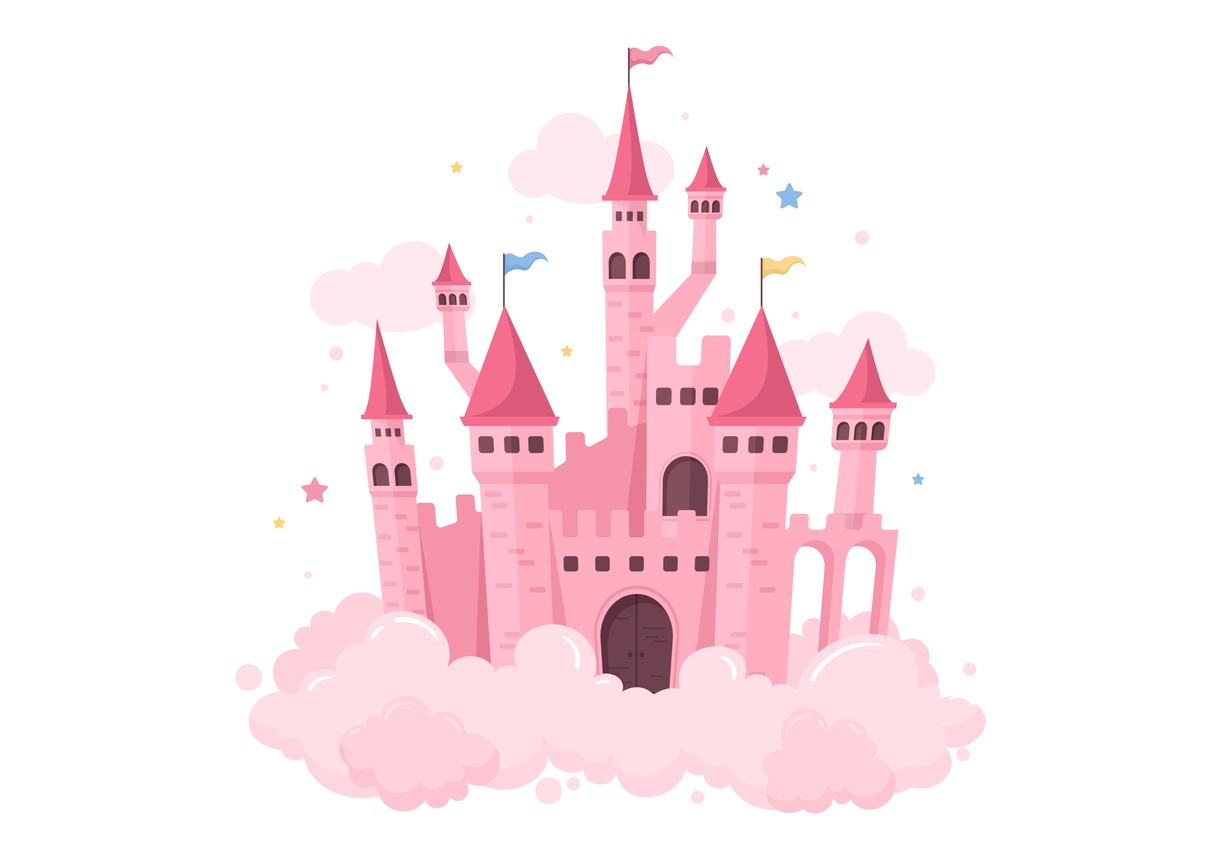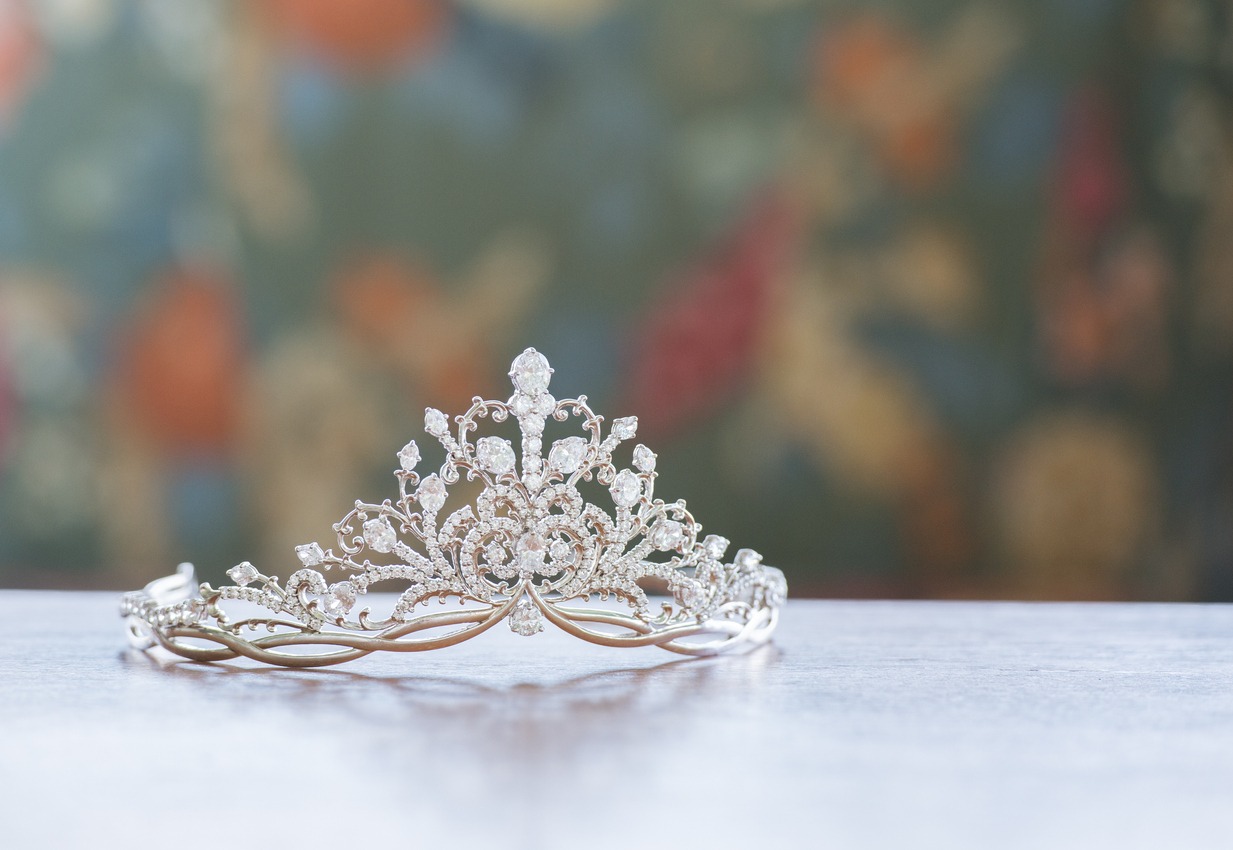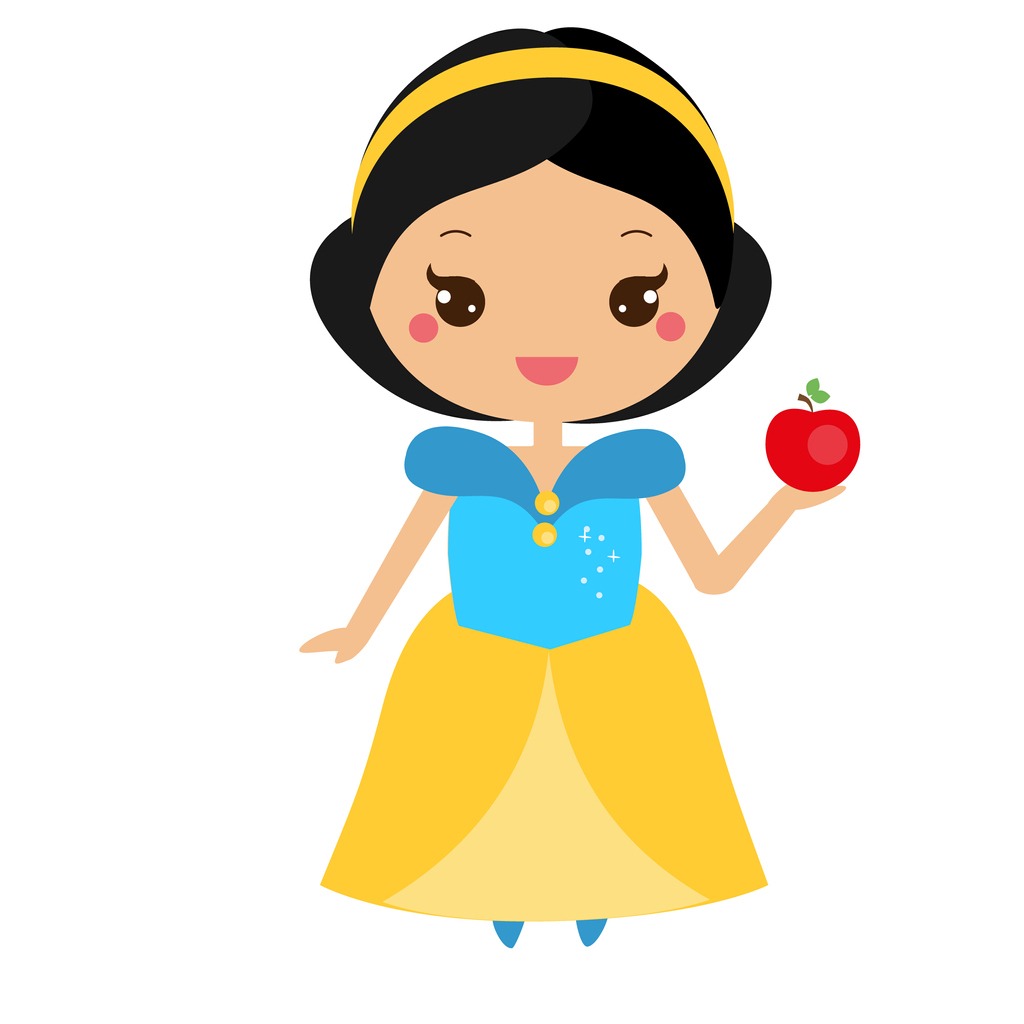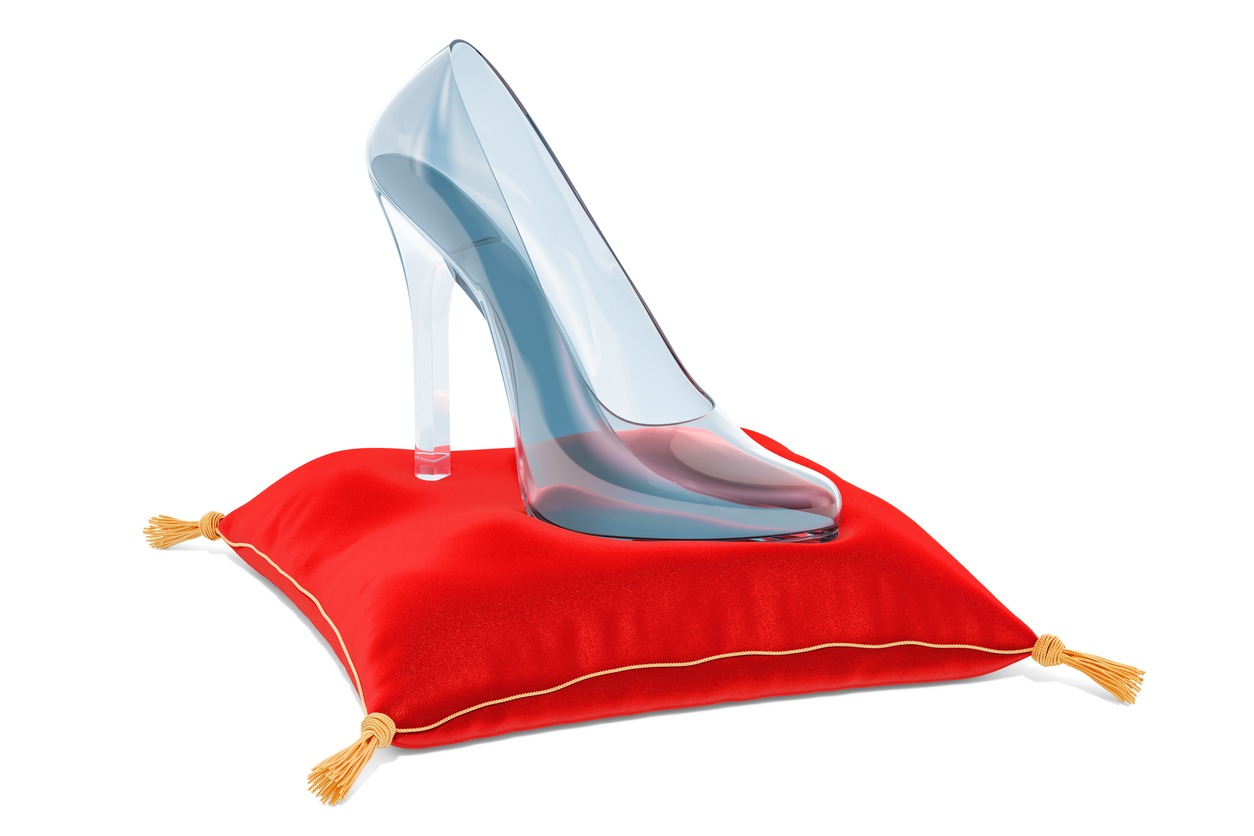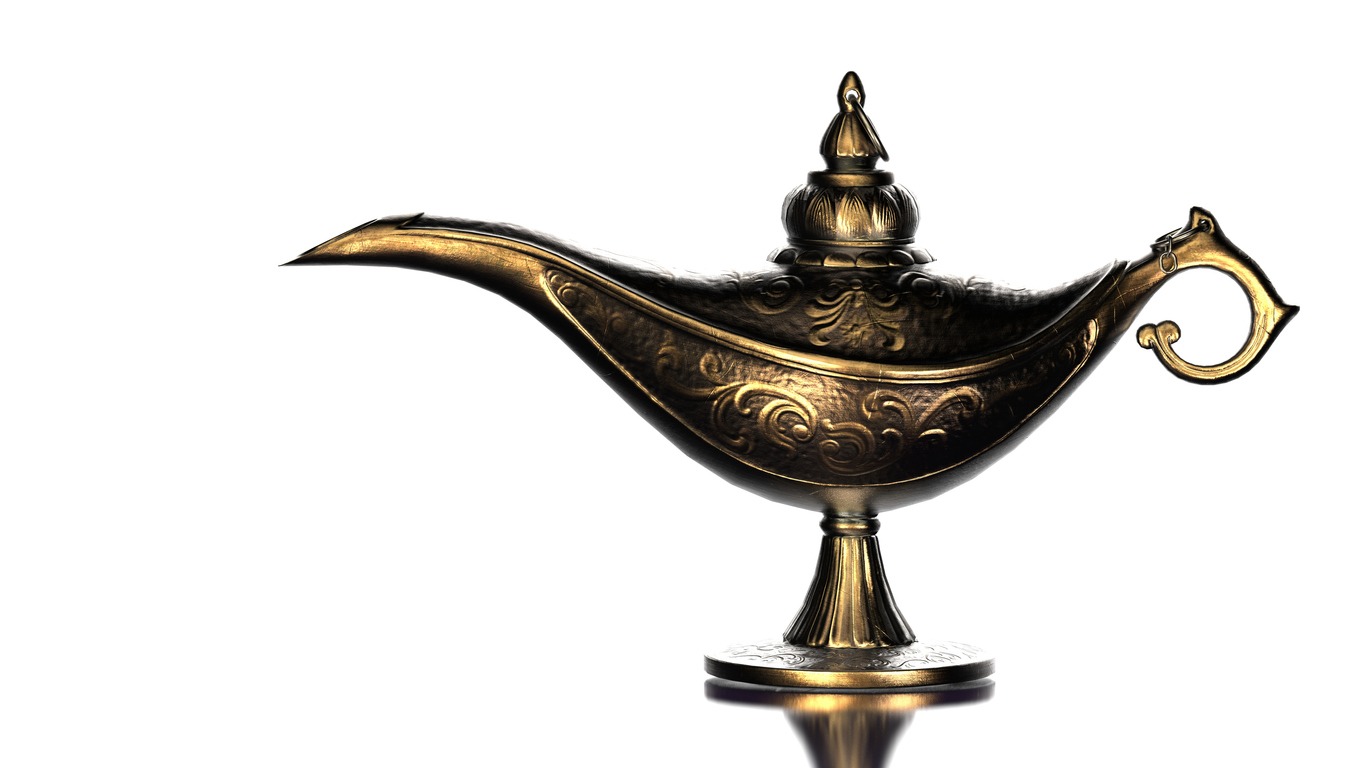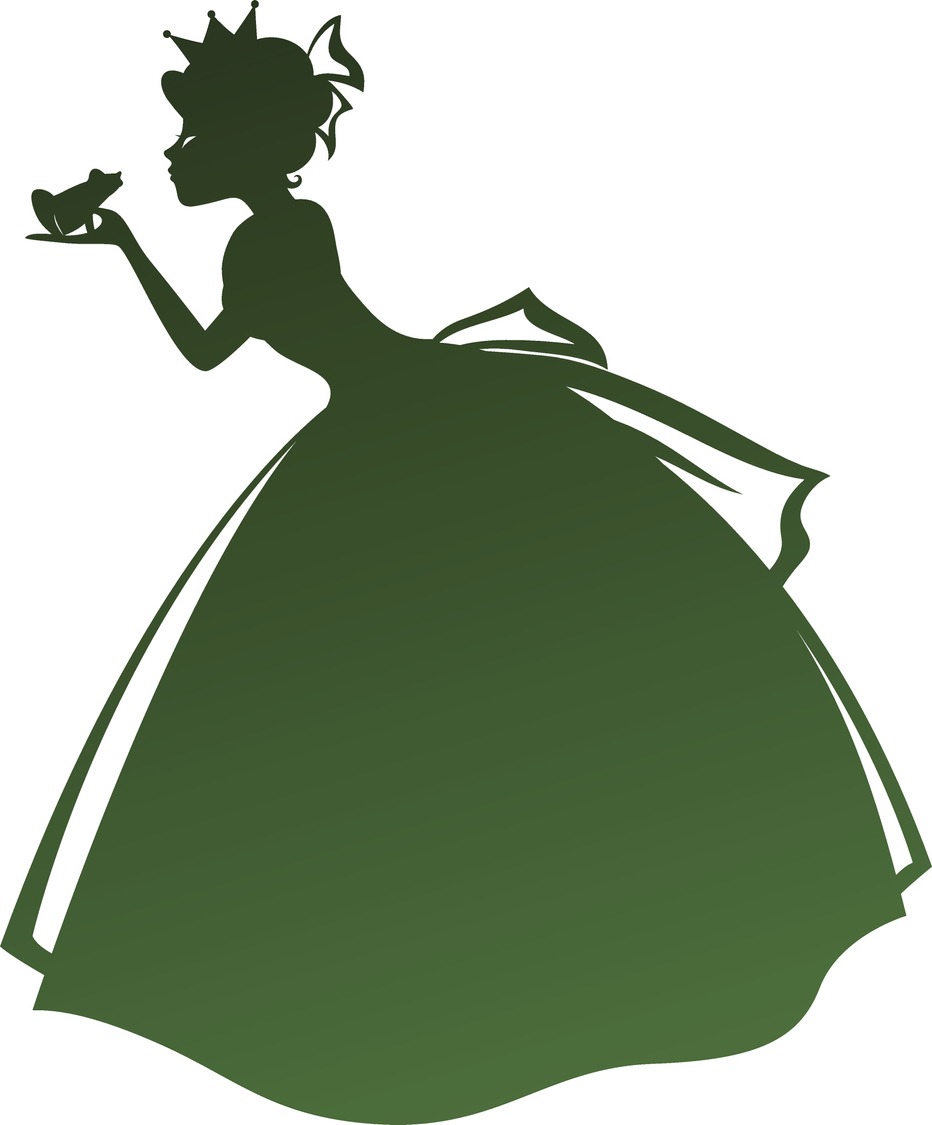Going on a journey through the enchanting world of Disney princesses is like flipping through the pages of a timeless fairy tale book. Each princess, a beloved character from Disney’s vast and magical portfolio, has captivated audiences of all ages for generations. From the classic charm of Snow White to the modern beauty of Elsa, Disney’s princesses represent a diverse tapestry of stories, cultures, and virtues.
In this ultimate guide, we explore the realms of each Disney princess, discussing their unique stories, the evolution of their characters over the years, and the cultural impact they have made.
What are Disney Princesses?
Originating from Walt Disney Animation Studios’ renowned movies, Disney Princesses are known for their distinct personalities, inspiring stories, and the moral lessons they impart. Each princess, from the very first Snow White, introduced in 1937, to the more recent additions like Moana, embodies a set of values and characteristics that resonate with audiences worldwide.
At their core, Disney princesses represent various virtues such as kindness, bravery, determination, and the pursuit of one’s dreams. They are often depicted overcoming obstacles, challenging societal norms, and demonstrating resilience in the face of adversity. For instance, Cinderella’s story of hope and patience, Belle’s love for reading and her looking beyond appearances, and Mulan’s courage and dedication to her family each narrate tales of personal growth and triumph.
Over the years, the concept of a Disney princess has evolved. The earlier princesses, like Aurora and Snow White, were often portrayed in roles that emphasized traditional notions of femininity and romance. However, modern princesses such as Elsa from “Frozen” break these molds, showcasing independence, leadership, and a sense of adventure. They are leaders in their own right, breaking barriers and setting new standards for what it means to be a princess.
Disney princesses also represent cultural diversity, with characters like Jasmine, Pocahontas, and Tiana reflecting the studio’s efforts to embrace and celebrate different backgrounds and stories. This diversity not only broadens the appeal of Disney princesses but also enables audiences from various parts of the world to see themselves represented in these beloved characters.
A Brief History of Disney Princesses
The concept of Disney princesses, which has become a cultural phenomenon, began not as a collective group but as individual characters starring in their own animated films. The history of these beloved princesses dates back to 1937 with the release of Walt Disney’s first full-length animated feature, “Snow White and the Seven Dwarfs.” Snow White marked the beginning of what would become an iconic legacy, setting the stage for numerous princesses to follow.
Over the years, more princesses joined the ranks, including Cinderella in 1950 and Aurora in 1959. These early princesses shared common traits: grace, kindness, and enduring hardships, often involving a storyline of romance and transformation. Their stories were based on existing fairy tales and folklore, reimagined and brought to life through animation.
The branding of Disney princesses as a collective entity began much later. In the late 1990s, Disney executive Andy Mooney was inspired to create an official Disney Princess brand after attending a Disney on Ice show. He noticed young girls dressed in princess costumes, albeit not official merchandise. Sensing an opportunity, Mooney spearheaded the idea of grouping the princesses under one umbrella for Disney’s merchandise line. In 2000, the Disney Princess brand was officially launched, becoming an instant success.
The Disney Princess brand has continued to evolve, adding new characters and adapting to changing societal norms and expectations. Modern princesses such as Merida, Elsa, and Moana have been portrayed as more independent and self-reliant, reflecting contemporary ideals of empowerment and individuality.
The Disney Princesses
There are already many Disney Princesses that are included in the current lineup, and each of these princesses offers a different background, history, or cultural impact. Here is a list of the most notable Disney Princesses.
Snow White (Snow White and the Seven Dwarfs)
Snow White, the first and one of the most iconic Disney princesses, debuted in the groundbreaking 1937 film, “Snow White and the Seven Dwarfs.” Characterized by her fair skin, rosy cheeks, and lips as red as a rose, Snow White’s appearance is the epitome of classic fairy tale beauty. Her story unfolds in a magical realm where kindness and innocence are her most defining traits. In the film, Snow White is a young princess whose beauty and gentle spirit bring out the envy and wrath of a wicked queen, setting the stage for a tale of adventure, compassion, and true love.
In “Snow White and the Seven Dwarfs,” Disney presented a character who embodied purity and grace yet displayed strength and resilience in the face of adversity. Snow White’s interactions with the seven dwarfs, each with their unique personalities, added depth and humor to the story, making it a beloved classic for all ages. Her melodious voice, love for singing and dancing, and her connection with nature and animals further accentuated her charming personality.
The Origins of Snow White
The character of Snow White, immortalized by Disney, finds its origins in the rich tapestry of European folklore. The most famous version, and the one that inspired Disney’s adaptation, is from the collection of German fairy tales compiled by the Brothers Grimm in the 19th century. Their tale, “Schneewittchen” (Snow White), tells the story of a young princess whose beauty incites the jealousy of her stepmother, leading to a series of dramatic events.
The Brothers Grimm’s Snow White is a narrative filled with dark undertones and symbolic elements typical of traditional fairy tales. It weaves a story of innocence, envy, and the struggle between good and evil. In their version, Snow White is described as a girl with skin as white as snow, lips as red as blood, and hair as black as ebony, a description that would become the foundation of Disney’s character design.
When Walt Disney decided to bring Snow White to life in animation, he transformed the darker tones of the original fairy tale into a more family-friendly version. Disney’s Snow White retained her core characteristics of beauty and kindness but was presented in a more approachable and endearing manner. The film adaptation, “Snow White and the Seven Dwarfs,” released in 1937, was a landmark achievement, being the first full-length animated feature in color and with sound.
The Cultural Impact of Snow White
Disney’s “Snow White and the Seven Dwarfs” not only revolutionized the world of animation but also left a profound impact on global culture. The movie marked a new era in filmmaking and storytelling, captivating audiences with its innovative animation techniques and compelling narrative. The film’s success laid the groundwork for the future of animated features, influencing generations of artists and filmmakers.
Snow White, as a character, became an icon of innocence and purity, her story resonating with themes of kindness, resilience, and the triumph of good over evil. The film’s phrases like “Mirror, mirror on the wall” and the song “Someday My Prince Will Come” became ingrained in popular culture, echoing the timeless appeal of the fairy tale.
Moreover, the film’s portrayal of Snow White also influenced societal perceptions of femininity and beauty. Her character design, with distinctive features and a gentle demeanor, became a template for fairy tale princesses for years to come. The impact of Snow White extended beyond entertainment, finding its place in fashion, merchandise, theme parks, and numerous adaptations, showcasing the far-reaching influence of this pioneering Disney classic. You can read our article about Snow White titled “Mirror, Mirror on the Wall: Discovering the Hidden Wonders of Disney’s Snow White” to know more about this beloved Disney Princess.
Cinderella
Cinderella, one of Disney’s most beloved princesses, is the epitome of grace, resilience, and optimism. First appearing in Disney’s 1950 animated film “Cinderella,” she quickly became an iconic character, symbolizing the classic rags-to-riches story. Cinderella is depicted as a kind-hearted and gentle young woman, enduring hardship and mistreatment from her wicked stepmother and stepsisters with unwavering hope and dignity.
In the film, Cinderella’s transformation from a downtrodden servant to a beautiful princess captured the hearts of audiences worldwide. Her signature look – a flowing blue gown, elegant glass slippers, and a sparkling tiara – became instantly recognizable and synonymous with fairy tale fashion. Cinderella’s journey in the film, aided by her Fairy Godmother and marked by the iconic moment of losing her glass slipper, is a tale of dreams coming true against all odds.
The Origins of Cinderella
Disney’s Cinderella, known for her grace and enduring spirit, has roots that extend far beyond the 1950 animated classic. The character of Cinderella originates from a rich global tapestry of folklore and storytelling, with versions of her tale found in cultures around the world. The most direct inspiration for Disney’s adaptation comes from the French version of the story, “Cendrillon,” written by Charles Perrault in 1697. Perrault’s rendition introduced elements that are now quintessential to the story, such as the fairy godmother, the pumpkin carriage, and the glass slippers.
However, the story of Cinderella is far older and more widespread than Perrault’s version. One of the earliest known versions of the Cinderella story dates back to ancient Greece, with the tale of Rhodopis, a Greek slave girl who marries the king of Egypt. Similarly, the Chinese folklore of Yeh-Shen, dating back to the 9th century, tells the story of a young girl living with a wicked stepmother, featuring a magical fish instead of a fairy godmother and golden slippers. You can check out our article titled “Glass Slippers and Midnight Bells: Uncovering the Enchanting Facts About Cinderella” for more information on the origins of this Disney Princess.
The Cultural Impact of Cinderella
Disney’s “Cinderella” has had a profound cultural impact, solidifying its place as a timeless classic in the realm of animation and storytelling. This film did more than just narrate a fairy tale; it became a cultural landmark that shaped and influenced generations. Cinderella’s story of triumph over adversity resonated deeply, offering a message of hope and the power of dreams to audiences worldwide.
The character of Cinderella became an icon of grace and perseverance, inspiring countless adaptations in film, television, theater, and literature. Her signature blue ball gown and glass slippers have become emblematic of fairy tale fashion, influencing the design and aesthetic of princess culture. The film’s themes of kindness, courage, and the transformative power of magic have been embraced by audiences, making Cinderella a symbol of optimism and the belief in a better future.
Cinderella’s narrative has been examined and interpreted in various cultural and academic contexts, sparking discussions on themes ranging from societal norms to individual agency. The story’s enduring popularity has led to its incorporation into educational materials, merchandise, and even theme park attractions, further cementing its influence in popular culture.
Princess Aurora (Sleeping Beauty)
Princess Aurora, known for her elegance and grace, is a cherished Disney princess who made her debut in the 1959 animated classic “Sleeping Beauty.” Often referred to as “Briar Rose,” her character is the epitome of gentleness and kindness, coupled with a dreamy, romantic nature. Aurora is distinguished by her long, golden hair, striking violet eyes, and her iconic pink gown, embodying the quintessential fairy tale princess.
In “Sleeping Beauty,” Aurora’s story unfolds as a tale woven with enchantment, a curse, and true love’s kiss. Born to King Stefan and Queen Leah, Aurora is cursed by the malevolent fairy Maleficent to fall into a deep sleep on her sixteenth birthday, only to be awakened by a kiss from her true love. Raised in secrecy by three good fairies, Aurora’s life takes a dramatic turn as the curse unfolds, leading to her eventual slumber.
Aurora’s character in the film is marked by her innocence and beauty, drawing people and animals alike to her. Despite her limited screen time, her presence is central to the story’s plot, driving the narrative forward. The film “Sleeping Beauty,” with its rich animation and Tchaikovsky’s mesmerizing score, presents Aurora’s tale in a majestic and enchanting manner, making it a beloved classic in Disney’s film repertoire.
The Origins of Princess Aurora
Disney’s Princess Aurora, the star of “Sleeping Beauty,” finds her roots in a rich tapestry of folklore and legend. The character of Aurora is derived primarily from the French fairy tale “La Belle au bois dormant” by Charles Perrault and the Brothers Grimm’s version, “Dornröschen” (Little Briar Rose). These tales tell the story of a beautiful princess cursed to sleep for a hundred years, only to be awakened by a prince’s kiss, a narrative that Disney adapted and brought to life in its 1959 animation.
Perrault’s version, part of his 1697 work “Tales of Mother Goose,” introduces elements like the wicked fairy’s curse at the princess’s christening and the rescue by a prince. The Brothers Grimm’s adaptation, included in their 1812 collection “Grimm’s Fairy Tales,” also features the familiar sleeping curse and the heroine being awakened by a prince, though with notable differences in plot details and character development.
Disney’s adaptation of these classic fairy tales resulted in the creation of Princess Aurora, blending the traditional elements of the story with the studio’s unique artistic vision. In Disney’s “Sleeping Beauty,” Aurora’s character is given a distinct identity, with an emphasis on her royal lineage, grace, and the iconic curse that leads to her long slumber. The film’s visual style, inspired by medieval art and the intricate aesthetics of storybook illustrations, added to Aurora’s character, making her a memorable and distinct Disney princess.
The Cultural Impact of Princess Aurora
Since her cinematic debut in 1959, Disney’s Princess Aurora from “Sleeping Beauty” has had a significant impact on popular culture. Her character, embodying classic fairy-tale elegance and grace, has become a symbol of gentility and timeless beauty in the Disney Princess lineup. Aurora’s story, though rooted in traditional fairy tale elements, resonated with audiences, reinforcing the enduring allure of tales where love and goodness triumph.
Aurora’s influence extends beyond the realm of animation. Her iconic pink dress and distinctive design have become staples in the world of fairy-tale fashion, inspiring clothing lines, dolls, and countless merchandise. Her character has also become a favorite in Disney parks and parades, enchanting visitors from around the globe.
In addition, Aurora’s portrayal in “Sleeping Beauty” has sparked discussions around female representation in media, particularly in how fairy-tale narratives shape perceptions of womanhood and romance. This dialogue has contributed to the evolution of how Disney Princesses are portrayed in more recent productions, with a focus on more diverse and active roles. For more information on this character, check out our article titled “Princess Aurora: The Enchanting Tale Behind Disney’s Sleeping Beauty.”
Ariel (The Little Mermaid)

Ariel, the vibrant and spirited mermaid princess, made a splash in Disney’s animated landscape with her debut in the 1989 film “The Little Mermaid.” Known for her fiery red hair, curiosity, and enchanting singing voice, Ariel is depicted as a free-spirited and adventurous young mermaid. Fascinated by the human world and driven by her desire to explore life above the sea, Ariel’s character breaks away from traditional princess norms, embodying a sense of adventure and independence.
In “The Little Mermaid,” Ariel’s journey begins under the sea in the kingdom of Atlantica, where she lives with her father, King Triton, and her six older sisters. Unconventional and headstrong, Ariel often finds herself at odds with her father’s strict rules, driven by her fascination with human artifacts and her dream to live among humans. This longing leads her to a deal with the sea witch, Ursula, setting off a series of events that drive the film’s plot.
Ariel’s character resonates with audiences through her relentless pursuit of her dreams, her courage to challenge the status quo, and her unwavering determination. Her transformation from a mermaid to a human to pursue her love, Prince Eric, showcases her as a symbol of following one’s heart against all odds.
The Origins of Ariel
Disney’s Princess Ariel, the beloved mermaid from “The Little Mermaid,” finds her origins in the rich world of classical literature. Ariel’s character is based on the titular character in Hans Christian Andersen’s fairy tale “Den Lille Havfrue,” first published in 1837. Andersen’s story, hailing from Denmark, narrates the poignant tale of a young mermaid who dreams of becoming human after falling in love with a prince she saves from a shipwreck.
Andersen’s original tale is a complex narrative with darker and more tragic elements compared to its Disney adaptation. In the story, the mermaid sacrifices her voice to gain human legs, with the painful condition that walking will feel like treading on sharp knives. Unlike the Disney version, Andersen’s story does not conclude with a conventional ‘happily ever after,’ offering instead a bittersweet ending that reflects themes of self-sacrifice, love, and the yearning for an immortal soul.
When Disney decided to adapt Andersen’s story into an animated film, significant changes were made to make the story more suitable for a younger audience and to fit the studio’s narrative style. Launched in 1989, Disney’s “The Little Mermaid” transformed the original tale into a vibrant, musical adventure. Ariel was reimagined as a spirited and headstrong princess, yearning for exploration and understanding of the human world. To learn more about the origins of The Little Mermaid, check out our article titled “Unveiling the Ocean’s Secrets: Fascinating Facts About Princess Ariel.”
The Cultural Impact of Ariel
Disney’s Princess Ariel from “The Little Mermaid” has made a significant splash in popular culture. Ariel’s portrayal as a curious, adventurous mermaid with a dream to explore the world beyond the sea resonated with audiences, marking a shift in the depiction of Disney princesses from passive figures to active protagonists. Her story of pursuing her dreams and finding her voice, both literally and figuratively, has inspired and empowered generations.
Ariel’s impact extends beyond the film itself. She became a cultural icon, influencing fashion, music, and the arts. Her distinct look, with vibrant red hair and a mermaid tail, became a popular choice for costumes and merchandise. The film’s soundtrack, particularly the song “Part of Your World,” has become an enduring hit, echoing Ariel’s longing for exploration and self-discovery.
Furthermore, Ariel’s character played a crucial role in revitalizing Disney’s animation department, ushering in what is known as the Disney Renaissance, a period that saw the production of several critically and commercially successful animated films. “The Little Mermaid” also paved the way for more dynamic and diverse Disney princesses, contributing to the evolution of female characters in animation.
Belle (Beauty and the Beast)
Belle, distinguished by her intelligence, compassion, and unyielding spirit, is a celebrated Disney princess who graced the screen in the 1991 animated classic “Beauty and the Beast.” Marked by her love for books and her desire for adventure, Belle stands apart from traditional princesses, characterized by her quest for knowledge and a life beyond the provincial town where she resides. Her appearance, with brown hair, hazel eyes, and her iconic yellow ball gown, makes her instantly recognizable, embodying a different kind of beauty that is both internal and external.
In “Beauty and the Beast,” Belle’s journey begins as she seeks to save her father, leading her to the enchanted castle of the Beast. Unlike many princesses who came before her, Belle is not waiting to be rescued; instead, she is the rescuer, displaying courage and empathy. Her interactions with the Beast and the enchanted characters of the castle unfold a story about seeing beyond appearances, the transformative power of love, and the importance of inner beauty.
Belle’s character resonates deeply with audiences for her independence, strong will, and her love for reading, which is quite a departure from the conventional portrayal of women in fairy tales.
The Origins of Belle
The character of Belle is based on “La Belle et la Bête,” written by French novelist Gabrielle-Suzanne Barbot de Villeneuve in 1740 and later revised by Jeanne-Marie Leprince de Beaumont in 1756. This tale presents the story of a young woman who learns to look beyond appearances and falls in love with a prince cursed to live as a beast.
The original story of Belle is set in a bygone era of France and contains many of the elements familiar in Disney’s adaptation: a beautiful and intelligent young woman, a beast living in a cursed castle, and themes of love and redemption. However, the original fairy tale is much more complex, with intricate backstories and a range of magical characters.
Disney adapted this classic story into an animated film with significant changes made to make Belle more relatable to modern audiences. Released in 1991, Disney’s “Beauty and the Beast” transformed Belle into a more proactive and strong-willed character, emphasizing her intelligence, kindness, and longing for adventure.
The Cultural Impact of Princess Belle
Belle’s character broke away from the traditional princess mold, resonating with audiences seeking a more relatable and empowered female lead. Her intellectual curiosity and bravery in the face of danger have inspired a generation to value knowledge and inner strength.
Beyond the realm of animation, Belle’s influence is evident in various aspects of popular culture, including literature, fashion, and theater. Her iconic yellow gown has become a symbol of elegance and has influenced the design of princess-themed apparel and merchandise. The story of “Beauty and the Beast” has seen numerous adaptations, including a successful Broadway musical and a live-action film, further cementing Belle’s status as a cultural icon.
Belle’s character has also sparked discussions on themes such as the importance of inner beauty and the power of empathy and understanding. She has become a role model for challenging societal norms and embracing one’s uniqueness. For more information on Princess Belle, head over to our article titled “Beyond the Beast’s Castle: Discovering the Enchanting Secrets of Princess Belle.”
Princess Jasmine (Aladdin)
Princess Jasmine, a character celebrated for her spirited independence and strong-willed nature, graced the screen in Disney’s 1992 animated film “Aladdin.” As the princess of the fictional city of Agrabah, Jasmine stands out with her distinctive style, marked by her flowing turquoise outfit and her long, black hair. She is known not only for her beauty but also for her sharp wit, adventurous spirit, and compassionate heart.
In “Aladdin,” Jasmine is portrayed as a young woman eager to experience life beyond the palace walls, desiring to explore the world on her own terms. Her character challenges the conventional expectations of a princess, refusing to be just a passive participant in her own life. This drive for autonomy leads her to Aladdin, a kind-hearted street urchin with whom she embarks on a journey filled with magic, danger, and romance.
Jasmine’s character was a significant development in the evolution of Disney princesses, portraying a more active and decisive figure who plays a key role in her own story. Her interactions in “Aladdin” showcase her intelligence, courage, and a desire for personal freedom, qualities that resonated with audiences worldwide. Jasmine’s presence in the film not only added depth to the narrative but also brought a representation of Middle Eastern culture to Disney’s princess lineup, making her a standout character in the Disney Princess pantheon.
While our guide introduces you to princess Jasmine, you can also explore How Do Disney Movies Portray Different Cultures and Traditions?. See how these beloved films reflect and celebrate the diversity of cultures and traditions, offering a deeper understanding of the stories behind each princess.
The Origins of Princess Jasmine
Disney’s Princess Jasmine, known for her bold spirit and independent nature, is rooted in the rich tapestry of Middle Eastern folklore. Her character is derived from the centuries-old collection of tales known as “One Thousand and One Nights,” sometimes referred to as “Arabian Nights.” Within these stories, the tale of “Aladdin and the Magic Lamp” serves as the primary inspiration for Disney’s 1992 animated film “Aladdin,” in which Princess Jasmine plays a central role.
The original “Aladdin” story, though set in a mythical Middle Eastern world, was actually added to the “Arabian Nights” collection by a French translator, Antoine Galland, who heard it from a Syrian storyteller. This story did not originally include Jasmine’s character. In Disney’s adaptation, Jasmine was created to add depth and a strong female lead to the narrative. Her character was developed to challenge the traditional roles of princesses in fairy tales, embodying a more modern and proactive personality.
In creating Jasmine, Disney artists and animators drew inspiration from various sources, including Middle Eastern and South Asian art, culture, and fashion. Her character design, featuring distinctive clothing and architecture, reflects a blend of these cultural influences, making her unique among the Disney Princesses. If you want to know more about the original story of Aladdin, you can read “Jasmine’s Journey: Exploring the Hidden Wonders Behind Aladdin’s Princess.”
The Cultural Impact of Princess Jasmine
Princess Jasmine has made a significant impact on popular culture, emerging as a symbol of independence and strength in the Disney Princess lineup. Her character broke the mold of the traditional, more passive princess roles, resonating with audiences who sought a more assertive and self-reliant female lead. Jasmine’s portrayal as a determined and courageous young woman challenged societal norms and offered a fresh perspective on what it means to be a princess.
Jasmine’s cultural significance extends beyond the realm of animation. Her distinctive style, characterized by her iconic turquoise outfit, became a fashion inspiration, influencing costume designs and merchandise. The character of Jasmine also played a crucial role in introducing elements of Middle Eastern culture to a global audience, adding diversity to Disney’s range of princesses.
Moreover, Jasmine’s presence in “Aladdin” sparked conversations about representation in media, paving the way for more culturally diverse characters in future Disney films. Her influence is evident in the various adaptations of the film, including the Broadway musical and the live-action movie, both of which further cemented her status as an iconic character.
Pocahontas
Pocahontas stepped into the world of Disney through the 1995 animated film “Pocahontas,” a character distinguished by her strong spirit and connection with nature. Unlike her princess predecessors, Pocahontas is portrayed as a free-spirited and courageous young woman, deeply attuned to the world around her. With long, flowing black hair and traditional attire, her character is an embodiment of harmony and resilience. Pocahontas is known for her curiosity, wisdom beyond her years, and a strong sense of justice and responsibility towards her people and the environment.
In the film, Pocahontas is the daughter of Chief Powhatan, and her story revolves around her encounter and developing relationship with English settler John Smith. The narrative delves into themes of cultural understanding, peace, and respect for the earth, diverging from the traditional Disney princess storyline. Pocahontas is depicted as a mediator between her tribe and the English settlers, showcasing her bravery and commitment to peace.
The Origins of Pocahontas
Disney’s Pocahontas is based on a real historical figure of the same name, a Native American woman from the Powhatan tribe, a group of Native Americans that originally lived in the land known today as eastern Virginia in the United States. Her story was brought to life in Disney’s 1995 animated film “Pocahontas.” The real Pocahontas was born in the late 16th century and is most famous for her association with the English colonist John Smith and the Jamestown colony in Virginia.
The historical Pocahontas played a significant role in the early stages of the English settlement in the New World. She is remembered for her interactions with the settlers, particularly John Smith, and her subsequent marriage to another Englishman, John Rolfe. Her life was marked by cultural exchange and adaptation, and she became a symbol of peace between the English settlers and the Native Americans. You can read “Colors of the Wind: Unveiling the Fascinating Stories Behind Disney’s Pocahontas” for more info on the real-life Pocahontas.
When Disney chose to adapt Pocahontas’ story into an animated film, they took considerable creative liberties to craft a narrative suitable for their audience. The Disney version presents a romanticized and fictionalized portrayal of Pocahontas, focusing on themes of love, environmentalism, and harmony between different cultures. While inspired by the real Pocahontas, Disney’s character is a more mythic interpretation, with an emphasis on adventure, romance, and moral lessons.
The Cultural Impact of Pocahontas
As one of the first major animated films to feature a Native American protagonist, “Pocahontas” was groundbreaking, introducing many viewers to aspects of Native American history and folklore, albeit through a largely fictionalized narrative.
The film’s cultural impact is multifaceted. It brought to the forefront themes of environmentalism, cultural understanding, and the importance of harmony between humans and nature, themes encapsulated in the popular song “Colors of the Wind.” Pocahontas herself, as a character, was celebrated for her strength, independence, and connection to the natural world, offering a different kind of heroine for a young audience.
On the other hand, “Pocahontas” also generated discussion about the representation of historical events and figures in media. Critics and historians pointed out the liberties taken with the real story of Pocahontas and the complexities of depicting cultural narratives in film. This sparked broader discussions about authenticity and respect in storytelling, particularly when dealing with culturally sensitive subjects.
Mulan
Mulan is a unique figure in the Disney Princess lineup. She made her first appearance in the 1998 animated film “Mulan.” Unlike traditional princesses, Mulan is portrayed as a warrior who defies societal norms and gender roles. With a spirited and strong-willed nature, she stands out for her willingness to risk everything for her family and country.
In “Mulan,” the character is introduced as Fa Mulan, a young woman from ancient China. Faced with her father’s conscription into the Chinese army despite his frail health, Mulan disguises herself as a man and takes his place. Throughout the film, Mulan challenges the expectations placed upon her, proving her mettle and strategic prowess on the battlefield. Her journey is one of self-discovery as she finds her inner strength and brings honor to her family.
The Origins of Mulan
Mulan’s character is rooted in Chinese folklore. Her story originates from the ancient Chinese ballad “The Ballad of Mulan,” which dates back to the Northern Wei Dynasty (386–534). This narrative poem tells the tale of Hua Mulan, a young woman who disguises herself as a man to take her father’s place in the army, serving for over a decade with distinction and returning home with honor.
In the original ballad, Mulan is depicted as a devoted daughter and a skilled warrior, themes that are central to Disney’s adaptation. The story of Mulan has been told and retold through various versions in Chinese literature and folklore, each iteration highlighting different aspects of her character and journey. However, the core elements of her story remain consistent: her disguise as a male soldier, her exceptional martial abilities, and her dedication to family and country.
In Disney’s adaptation of the ballad, they crafted a narrative that combined elements of the traditional Mulan legend with a modern storytelling approach. The film was developed with a focus on Mulan’s character development, her internal conflict, and her journey to becoming a hero. While the movie takes creative liberties, it retains the spirit of the original folklore, portraying Mulan as a symbol of courage and selflessness.
The Cultural Impact of Mulan
Since its release in 1998, Disney’s “Mulan” has left a significant mark on popular culture, shaping perceptions and inspiring audiences around the world. Mulan’s character, breaking away from the traditional princess mold, resonated strongly with viewers, especially for her representation of strength, independence, and loyalty. As one of the first Disney films to feature an East Asian heroine, “Mulan” played a crucial role in diversifying the range of characters in children’s animation and broadening representation.
Mulan’s story, centered on themes of self-discovery and bravery, struck a chord with audiences beyond the realm of children’s entertainment. Her character became an icon of empowerment and courage, particularly resonating with those who sought to challenge gender norms and societal expectations. The film’s famous song, “Reflection,” became an anthem for self-identity and acceptance, further emphasizing the movie’s impact. If you want to learn more about the character, you can read “Interesting Facts About Princess Mulan.”
Princess Tiana (The Princess and the Frog)
Princess Tiana, notable for being Disney’s first African American princess, made her debut in the 2009 animated film “The Princess and the Frog.” Set in the vibrant city of New Orleans during the Jazz Age, Tiana is portrayed as a hardworking, ambitious young woman with a dream of owning her own restaurant. Her character is a refreshing departure from traditional princesses, embodying the values of perseverance, resilience, and self-reliance.
In “The Princess and the Frog,” Tiana is introduced as a talented cook working two jobs to save money for her restaurant, a dream she shared with her late father. Her journey takes a magical turn when she meets Prince Naveen, who has been transformed into a frog by a voodoo curse. In an attempt to break the spell, Tiana’s life is whisked into an adventure filled with enchantment, challenges, and self-discovery.
The Origins of Princess Tiana
Disney’s Princess Tiana, introduced in the 2009 film “The Princess and the Frog,” is a character inspired by the classic tale “The Frog Prince” but with a unique and modern twist. Unlike the traditional story where a princess kisses a frog that then turns into a prince, Disney reimagined the narrative to create a more contemporary and relatable character in Tiana. For more info on the original story, read “The Enchanting World of Princess Tiana: A Tale of Dreams and Determination.”
The character’s creation was partly influenced by the real-life story of Leah Chase, the renowned African American chef from New Orleans known as the Queen of Creole Cuisine. Chase’s legendary career and her famous restaurant, Dooky Chase’s, served as key inspirations for Tiana’s character and her dream of owning a restaurant. This real-world connection grounded Tiana’s story in authenticity and added depth to her character.
Additionally, Tiana was developed in response to the growing demand for more diverse and realistic characters in Disney films. As the first African American Disney princess, her creation marked a significant step towards inclusivity and representation in Disney’s princess lineup. Tiana’s character was carefully crafted to embody determination, hard work, and the importance of staying true to one’s dreams, setting her apart from her predecessors.
The Cultural Impact of Princess Tiana
Princess Tiana has held a special place in popular culture, and she symbolizes a significant milestone in Disney’s history. As the first African American princess in the Disney Princess lineup, Tiana’s character marked a pivotal moment in the diversification of Disney’s portrayal of princesses, reflecting a broader commitment to representation and inclusivity in children’s media.
Tiana’s story, centered around ambition, hard work, and resilience, resonated with audiences worldwide. Her character offered a more realistic and relatable role model, moving away from the traditional fairy-tale narratives of previous Disney princesses. Tiana’s determination to achieve her dreams through her own efforts was a refreshing change that inspired and empowered a generation.
Beyond the realms of animation, Tiana’s impact has been far-reaching. Her character has inspired a range of merchandise, from dolls to clothing, and has become a favorite among guests in Disney parks. More importantly, Tiana’s presence has sparked conversations about the importance of diversity in storytelling and the representation of different cultures and backgrounds in film.
Elsa (Frozen)
Elsa, who captivated audiences with her powerful story of self-discovery and acceptance, became a cultural phenomenon following her appearance in Disney’s 2013 animated film “Frozen.” Distinguished by her platinum blonde hair and striking blue gown, Elsa is not your typical Disney princess. She is the queen of Arendelle, a character defined by her inner turmoil and extraordinary ice powers, which she struggles to control and conceal.
In “Frozen,” Elsa’s journey is one of learning to embrace her abilities and overcome her fears. Her character grapples with the responsibilities of her powers and the need to protect her kingdom and her sister, Anna. The narrative explores themes of isolation, freedom, and the bonds of sisterhood, diverging from traditional princess stories centered around romance. Elsa’s most iconic moment, the performance of the song “Let It Go,” symbolizes her liberation from her fears and her acceptance of her true self.
The Origins of Elsa
Disney’s Elsa, the compelling character from “Frozen,” finds her roots in classic literature. Elsa is loosely based on the Snow Queen from Hans Christian Andersen’s fairy tale of the same name, first published in 1844. Andersen’s Snow Queen is a powerful and somewhat enigmatic figure who reigns over a snowy kingdom, similar in some aspects to Elsa’s character, who possesses the magical ability to create ice and snow.
However, Disney’s interpretation of Elsa in “Frozen” diverges significantly from Andersen’s original portrayal. The Snow Queen in Andersen’s tale is more of a villainous character, whereas Elsa is depicted as a complex, multi-dimensional heroine grappling with her powers. The transformation from Andersen’s Snow Queen to Disney’s Elsa involved reimagining the character as a sympathetic figure undergoing a personal journey of self-acceptance and empowerment.
When developing “Frozen,” Disney creatives envisioned a story that centered around the themes of fear, love, and the familial bond between sisters. Elsa’s character was crafted to embody these themes, evolving from a feared queen to a beloved sister and leader, showcasing a narrative of growth and self-discovery.
The Cultural Impact of Elsa
After his appearance in “Frozen,” Elsa becomes an icon of empowerment and self-acceptance. Elsa’s story, characterized by her struggle and eventual embrace of her ice powers, struck a chord with audiences globally, challenging traditional narratives of Disney princesses. Her journey of overcoming fear and embracing her true identity resonated particularly with those facing their own personal challenges, making her a symbol of strength and resilience.
The cultural influence of Elsa is evident in various aspects of popular culture. Her signature song, “Let It Go,” became an anthem for liberation and self-expression, winning the Academy Award for Best Original Song. Elsa’s character also influenced fashion, with her iconic blue dress and braid becoming a popular choice for costumes, merchandise, and even inspiring runway looks.
Conclusion
In conclusion, the world of Disney Princesses is as diverse as it is enchanting, with each character embodying unique qualities and stories that have captivated audiences for generations. As we’ve explored in this ultimate guide, these iconic figures are more than just characters in beloved films; they are symbols of hope, courage, and the power of believing in oneself.
Disney Princesses have evolved over the years, reflecting changing societal values and inspiring new generations with their tales of bravery, kindness, and self-discovery. Their cultural impact extends far beyond the screen, influencing fashion and music and even shaping societal norms. After exploring the enchanting world of Disney princesses, you may be dreaming of your own fairy-tale experience. In How to Experience Disney Parks Like a VIP?, we offer insider tips and strategies to elevate your visit to the magical realms of Disney Parks, where the stories of these beloved princesses come to life right before your eyes.

